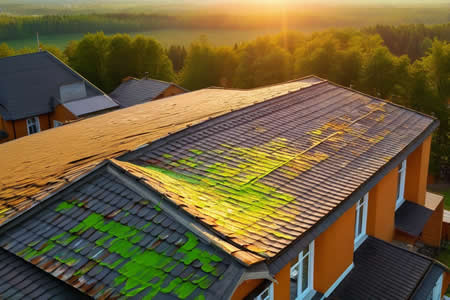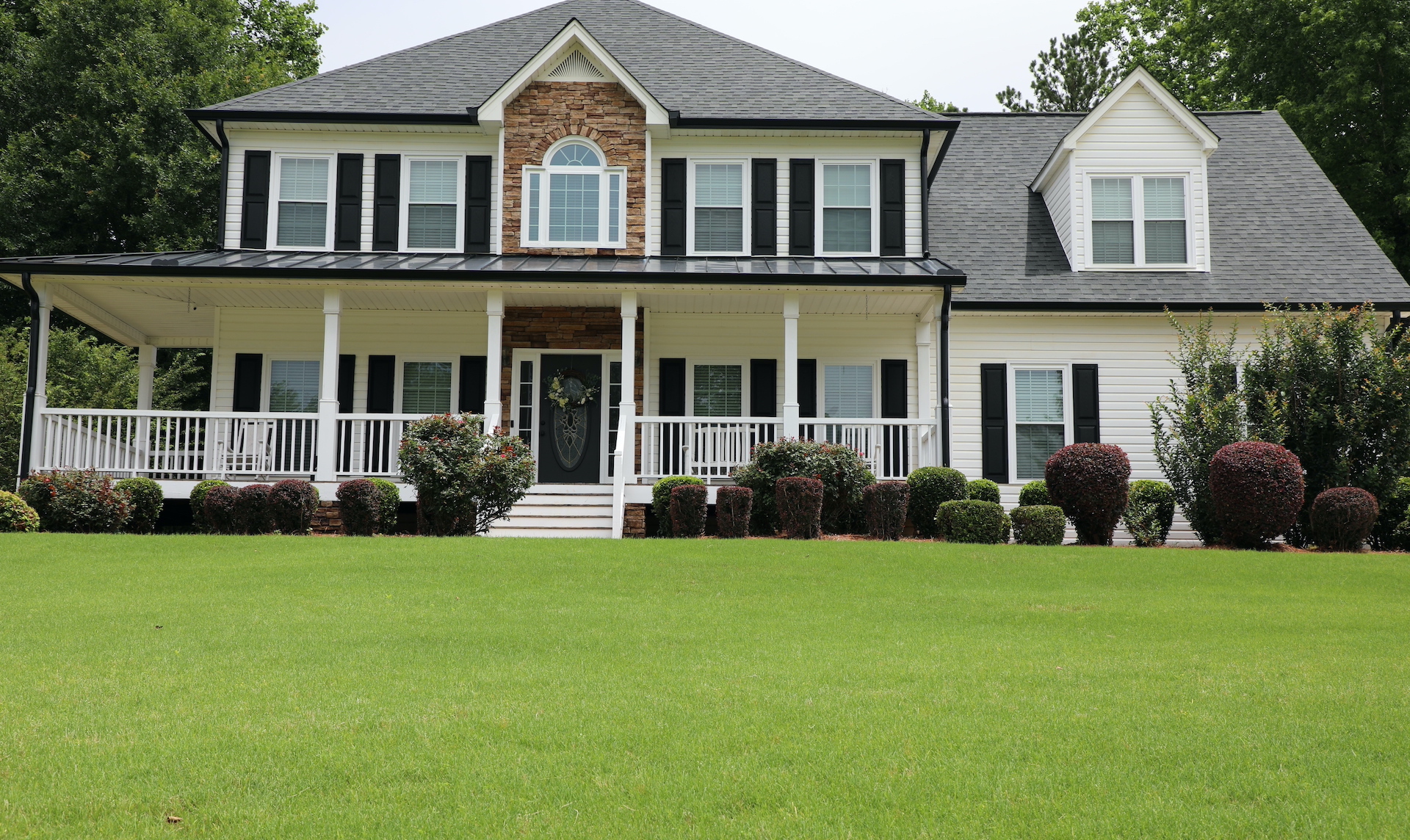
What’s Growing Up There? 5 Roof Algae Species You Didn’t Know Existed
When you look at your roof from the street, do you ever notice strange dark streaks, green fuzz, or even mysterious patches that seem to appear out of nowhere?
Most homeowners assume it’s just “mold” or “dirt,” but in reality, a wide variety of algae species can set up camp on your shingles, tiles, or metal roofing.
These little invaders aren’t just an eyesore; they can damage your roof over time, reduce your home’s curb appeal, and even shorten the lifespan of your roofing materials.
That’s right, your roof may be hosting more than one type of algae, and knowing the difference can help you understand the risks and how best to deal with them. Think of this as a crash course in rooftop biology with a homeowner-friendly twist.
And yes, we’ll make it less like a science textbook and more like an inside scoop into what’s really creeping around up there.
Before we dive into the species themselves, it’s worth noting that algae thrive in warm, moist environments.
Add in shade from nearby trees, clogged gutters, or areas where water pools, and you’ve got a five-star resort for algae colonies.
Once they move in, they don’t leave willingly.
Our expert team at Southern Softwash Services has taken the time to outline below five surprising algae species you probably didn’t know could be growing on your roof.
Gloeocapsa Magma: The Infamous Streak Maker
If you’ve seen long, dark streaks running down your shingles, you’ve already met Gloeocapsa magma. This is the most common roof algae in North America, and it thrives in humid, warm regions, especially in the South and along coastal areas.
At first, it shows up as faint stains, but as it grows, it forms large streaks that look like someone poured dirty water over your roof. These streaks are actually colonies of the algae, which feed on the limestone filler in asphalt shingles.
Yes, you read that right. Your roofing material is literally dinner for Gloeocapsa magma.
Why it matters:
- Weakens shingles by eating away at limestone.
- Creates hot spots by absorbing more heat (bad for energy bills).
- Drops curb appeal significantly — your home looks older and less cared-for.
If you see dark streaks on your roof, don’t shrug them off. That’s the calling card of Gloeocapsa magma, and the longer you wait, the worse it gets.
Trentepohlia: The Oddball Orange Invader
Most people expect algae to be green, but Trentepohlia breaks the rules. This bright orange or reddish species makes rooftops look rusty or brick-colored, which often leads homeowners to mistake it for rust stains.
Unlike Gloeocapsa magma, which thrives on roofing materials, Trentepohlia loves growing in shaded, damp spots and often arrives thanks to nearby moss or lichen. Its distinct color comes from high levels of carotenoids (the same pigments that give carrots their color).
Why it matters:
- Its unusual appearance can make your roof look like it’s corroding.
- Spreads quickly in moist, shaded environments.
- Provides a foothold for moss and lichen, which can do even more damage
If your roof has strange orange patches, it might not be rust at all—it could be Trentepohlia.
Phormidium: The Black Film Creeper
Another troublemaker in the world of roof algae is Phormidium.
Unlike streaky Gloeocapsa magma, this species forms a thin, black film across the surface of your roof. It often looks like soot, but don’t be fooled, this is a living organism.
Phormidium loves roofs in humid areas and can spread rapidly if left unchecked. What makes it particularly sneaky is how it holds on tight to roofing materials, making cleaning more difficult.
Why it matters:
- The black film traps heat, raising attic temperatures.
- Difficult to remove without professional equipment.
- It can weaken roof coatings and sealants over time.
If your roof looks like it’s covered in ash, it could very well be Phormidium.
Nostoc: The Slippery Green Blob
Here’s where things get slimy. Nostoc is a gelatinous, bright-green algae that often appears after heavy rain. When wet, it looks like slippery green blobs clinging to your roof or driveway.
When dry, it shrinks into a crusty, dark patch that looks harmless until the next rainfall brings it back to life.
Homeowners often mistake Nostoc for moss, but it’s a different beast altogether. This algae is notorious for being slippery, making it a hazard on driveways, sidewalks, and flat roofs.
Why it matters:
- Creates safety hazards (slippery surfaces).
- Holds moisture against roofing materials, accelerating wear.
- It can spread rapidly in wet climates.
If you’ve ever nearly slipped on a slimy patch near your home after a rainstorm, chances are you’ve met Nostoc.
Oscillatoria: The Thread-Like Roof Clinger
Rounding out our list is Oscillatoria, a filamentous (thread-like) algae that thrives in damp, shaded areas of the roof. Unlike streaky or slimy species, this one grows in long, hair-like strands that cling to shingles and tiles.
It gets its name from the way the filaments “oscillate” or wiggle as they grow. While that might sound harmless, the reality is that Oscillatoria retains water like a sponge, giving moss and lichen the perfect environment to move in.
Why it matters:
- Encourages moss and lichen growth.
- Holds water against shingles, leading to premature damage.
- It can create unsightly green mats across shaded areas.
If your roof looks like it has fine, hair-like growths, you’re likely looking at Oscillatoria.
Why Roof Algae Is More Than Just a Cosmetic Issue
Some homeowners think algae is just ugly, but the truth is, it can
- Shorten your roof’s lifespan by eating away at fillers, coatings, or shingles.
- Raise your energy bills by making your roof darker and hotter.
- Lower your home’s value by reducing curb appeal.
- Invite more damaging organisms like moss and lichen.
The longer you let algae thrive, the harder it is to get rid of.
How to Protect Your Roof from Algae
Now that you know your potential rooftop roommates, here are some ways to keep them in check:
- Regular Cleaning – A professional soft wash can safely remove algae without damaging shingles.
- Zinc or Copper Strips – Installing strips near the roof ridge releases ions that naturally deter algae growth.
- Proper Ventilation – Good airflow in your attic prevents excess moisture, making algae less likely to thrive.
- Tree Maintenance – Trim branches to reduce shade and improve airflow.
- Routine Inspections – Spotting algae early prevents it from spreading.
Final Thoughts
Your roof isn’t just a protective barrier; it’s also prime real estate for algae colonies you probably didn’t even know existed.
From the streak-making Gloeocapsa magma to the slimy Nostoc and the orange oddball Trentepohlia, these species aren’t just strange; they can cause real damage if ignored.
The good news? You don’t have to fight roof algae alone. Professional services can identify and safely remove these growths, restoring your roof to its best condition and extending its lifespan.
At Southern Softwash Services (southernswservices), we specialize in tackling algae, mold, and other rooftop invaders with expert care and modern cleaning methods.
Don’t let mystery stains or slimy patches take over your home. Schedule professional roof cleaning and enjoy a healthier, longer-lasting roof.

See the Difference a Professional Wash Makes
Schedule Your Pressure Washing Service In Rome Now!